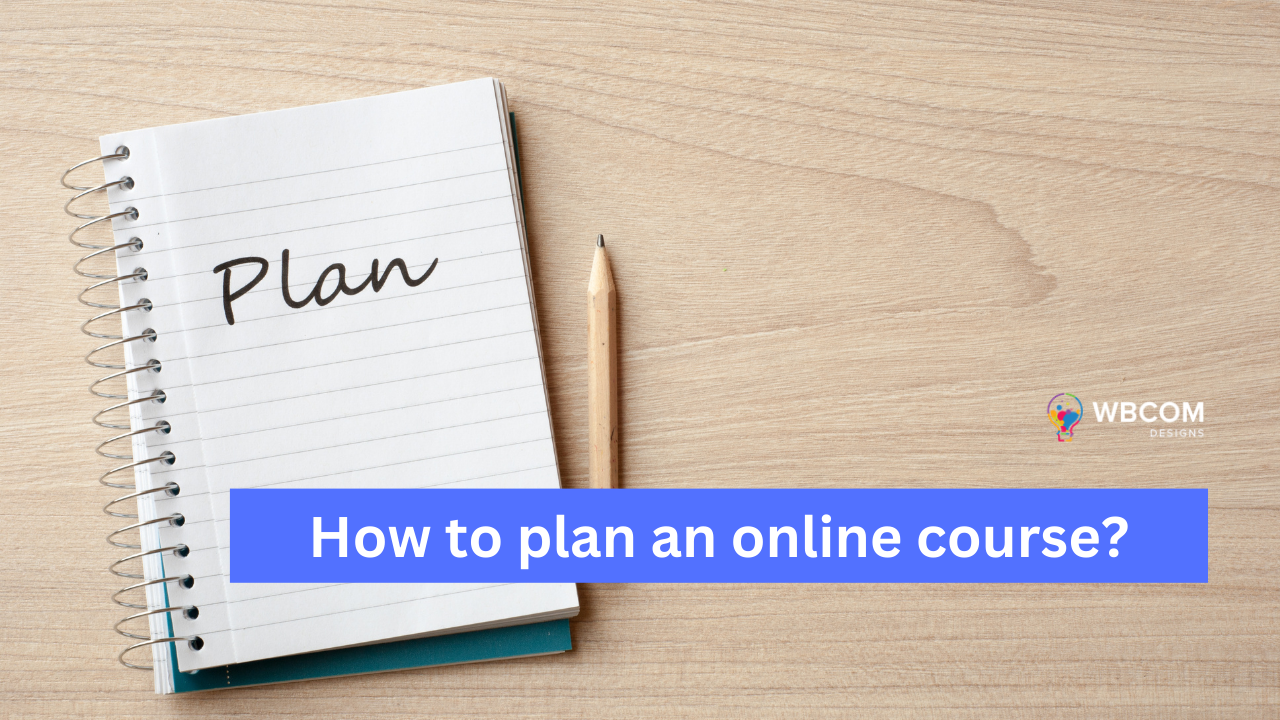In the current digital era, online learning has become the new norm. With the world rapidly changing, it has become more critical than ever to adapt and grow with it. Online courses have opened up endless possibilities for people to enhance their skills and knowledge, all from the comfort of their own homes. But have you ever wondered how to plan an online course that is engaging, informative and successful? The truth is, designing an online course that meets the needs of the learners is not easy. It requires careful planning, research, and a deep audience understanding. In this blog post, we will provide you with a comprehensive guide on how to plan an online course that captures your learners’ attention and provides them with a valuable learning experience. So, whether you’re an educator, a business owner, or someone looking to share your knowledge, this guide is for you!
Table of Contents
ToggleDefine the Course Objectives and Learning Outcomes
Defining clear course objectives and learning outcomes is essential to designing a successful online course. The course objectives should be specific, measurable, achievable, relevant, and time-bound (SMART). They should define the purpose and goals of the course and provide a clear direction for designing the course content and assessments. Identifying the critical learning outcomes students should achieve is crucial to designing a practical online course. Learning outcomes should be aligned with the course objectives and indicate what students can do, know or understand after completing the course. Both the course objectives and learning outcomes are essential for developing a course that meets the needs of the learners and provides them with a valuable learning experience.
Define the Target Audience and their Needs
Defining the target audience and analyzing their needs, learning styles, and preferences is essential for designing an online course that meets their expectations and provides a valuable learning experience. Identifying the target audience requires understanding their demographics, characteristics, and expectations. Analyzing their needs involves understanding what they want to achieve from the course and how it will benefit them. Learning styles and preferences refer to how individuals learn and process information. Identifying the target audience’s preferred learning style and preferences is essential for designing an engaging and practical course. Designing an online course tailored to the target audience’s needs, learning styles, and preferences will enhance the learning experience and improve the overall effectiveness of the course.
Choose the Appropriate Online Platform and Tools
Choosing the right online platform and tools to deliver an online course is critical to the success of the course. Online platforms like Learning Management Systems (LMS), Massive Open Online Courses (MOOCs), and online course builders offer different features and functionalities. It is essential to compare the features of each platform and select the one that best meets the needs of the course and target audience. Identifying the appropriate tools to deliver the course content is essential for designing an engaging and effective online course. Tools such as videos, audio, quizzes, and interactive activities can enhance the learning experience and improve student engagement. The appropriate tools should be selected based on the learning objectives, content, and target audience preferences. By choosing the right online platform and tools, course designers can deliver an online course that is effective, engaging, and tailored to the needs of the learners.
Develop the Course Content
Developing course content is a critical part of designing a practical online course. The course structure and syllabus should be designed with the objectives and learning outcomes in mind. A well-designed structure and syllabus should be easy to navigate, intuitive, and provide a clear learning path for students. Multimedia content, such as videos, images, and audio, can help engage learners and improve information retention. Incorporating interactive activities like quizzes, discussion forums, and collaborative projects can also enhance the learning experience and improve student engagement. These activities promote active learning, critical thinking, and problem-solving skills. Designing course content that is engaging and interactive can help learners stay motivated and interested in the course material. By developing a course designed for learners’ needs and preferences, course designers can provide a practical and engaging learning experience that fosters knowledge retention and skill development.
Implement Effective Instructional Strategies
Implementing effective instructional strategies is critical for delivering an online course that is engaging and effective. Selecting appropriate instructional strategies such as lectures, demonstrations, and discussions can help students understand and retain the course material. It is essential to choose instructional strategies that are aligned with the course objectives and learning outcomes. Incorporating different assessment forms, such as quizzes, assignments, and projects, can help measure student learning and provide feedback to learners. Assessment should be designed to evaluate the achievement of learning outcomes and provide learners with opportunities for reflection and improvement. Providing timely feedback can also enhance the learning experience and help learners stay motivated. By selecting appropriate instructional strategies and incorporating effective assessment methods, course designers can provide a practical and engaging learning experience that meets the needs of the learners.
Facilitate Effective Communication and Collaboration
Effective communication and collaboration among learners is essential for creating an engaging and interactive online learning environment. Clear communication channels, such as email, discussion forums, and messaging tools, should be established to allow learners to communicate with the instructor and each other easily. Facilitating interaction among learners can foster collaboration and peer learning, which can enhance the learning experience and promote critical thinking skills. Activities such as group projects, peer reviews, and discussion forums can help learners engage with each other and share their knowledge and experiences. It is essential to provide guidelines for communication and collaboration to ensure that learners are respectful and professional in their interactions. Course designers can create a positive learning community that fosters engagement, motivation, and knowledge retention by facilitating effective communication and collaboration.
Monitor and Evaluate the Course Performance
Monitoring and evaluating course performance is a crucial step in improving the effectiveness of an online course. Analyzing course data, such as student engagement, completion rates, and assessment results, can provide insights into the course’s performance and help identify areas for improvement. Monitoring the course performance also allows instructors to make real-time adjustments to the course to improve student engagement and retention. Gathering student feedback through surveys, interviews, and focus groups can provide insights into the learners’ experiences and help instructors improve future course offerings. Student feedback can also provide ideas for new course content and instructional strategies. By monitoring and evaluating course performance, instructors can continuously improve the course’s effectiveness and provide learners with a better learning experience.
Wrapping Up Words | Plan an online course
Planning an online course may seem daunting at first, but with the proper steps and tools, it can be a rewarding experience. Remember to start with your learning objectives and target audience, then create engaging content and interactive activities to keep your learners engaged. Don’t forget to incorporate feedback and evaluate your course regularly to improve its effectiveness. With these tips, you can create a successful online course that meets the needs of your learners and helps them achieve their goals.








